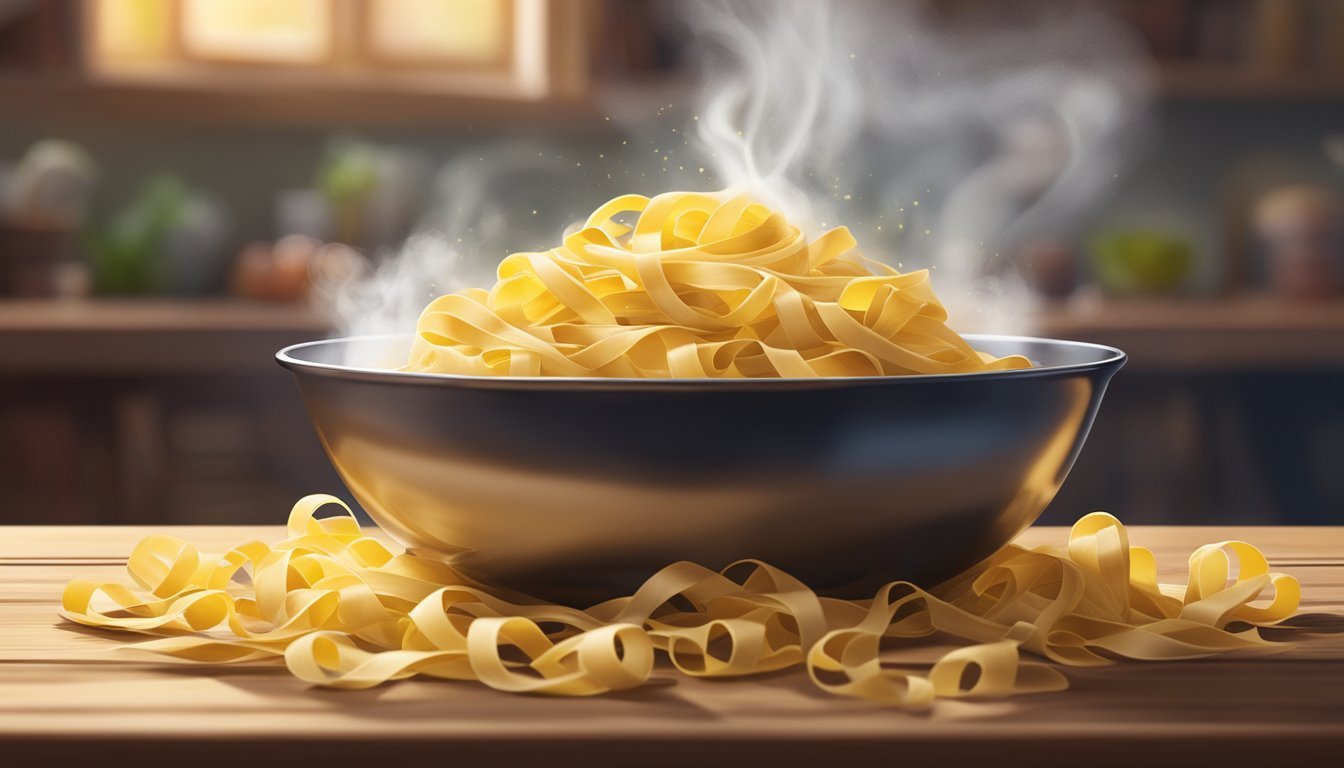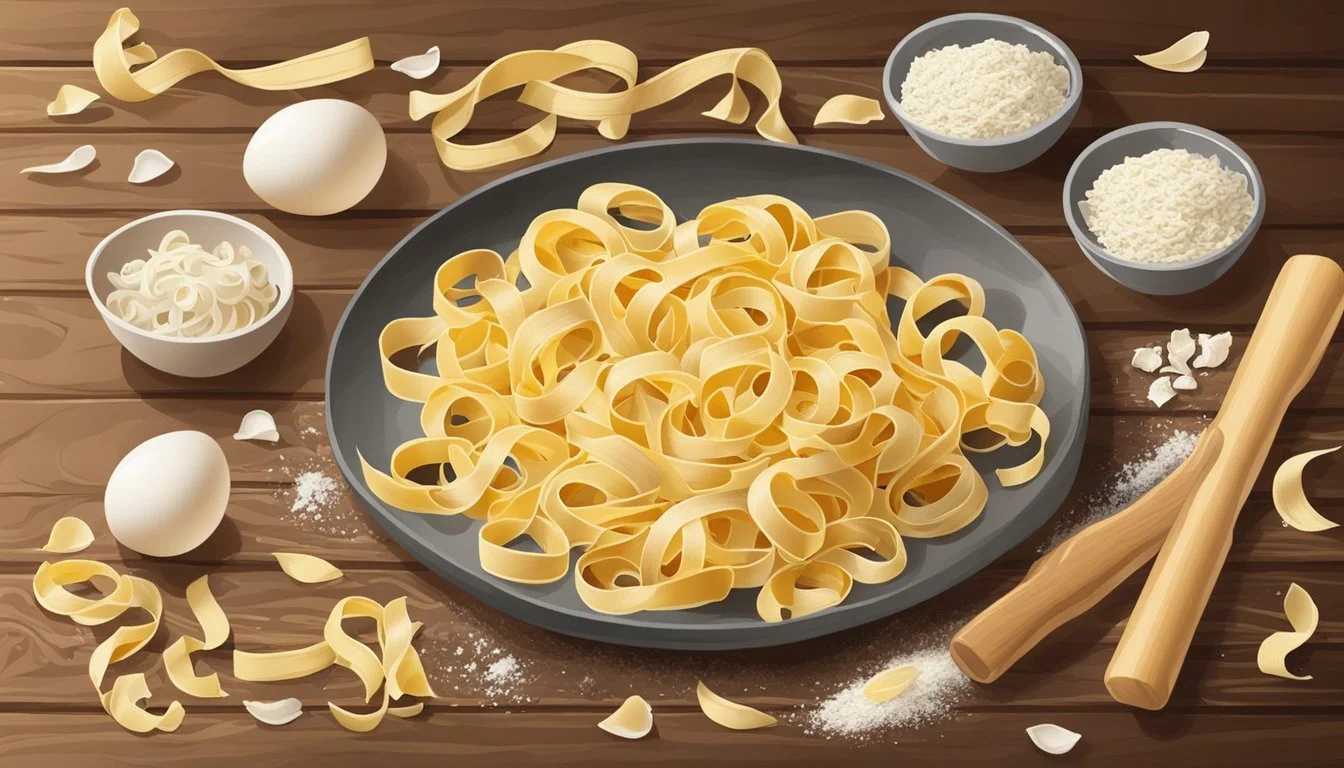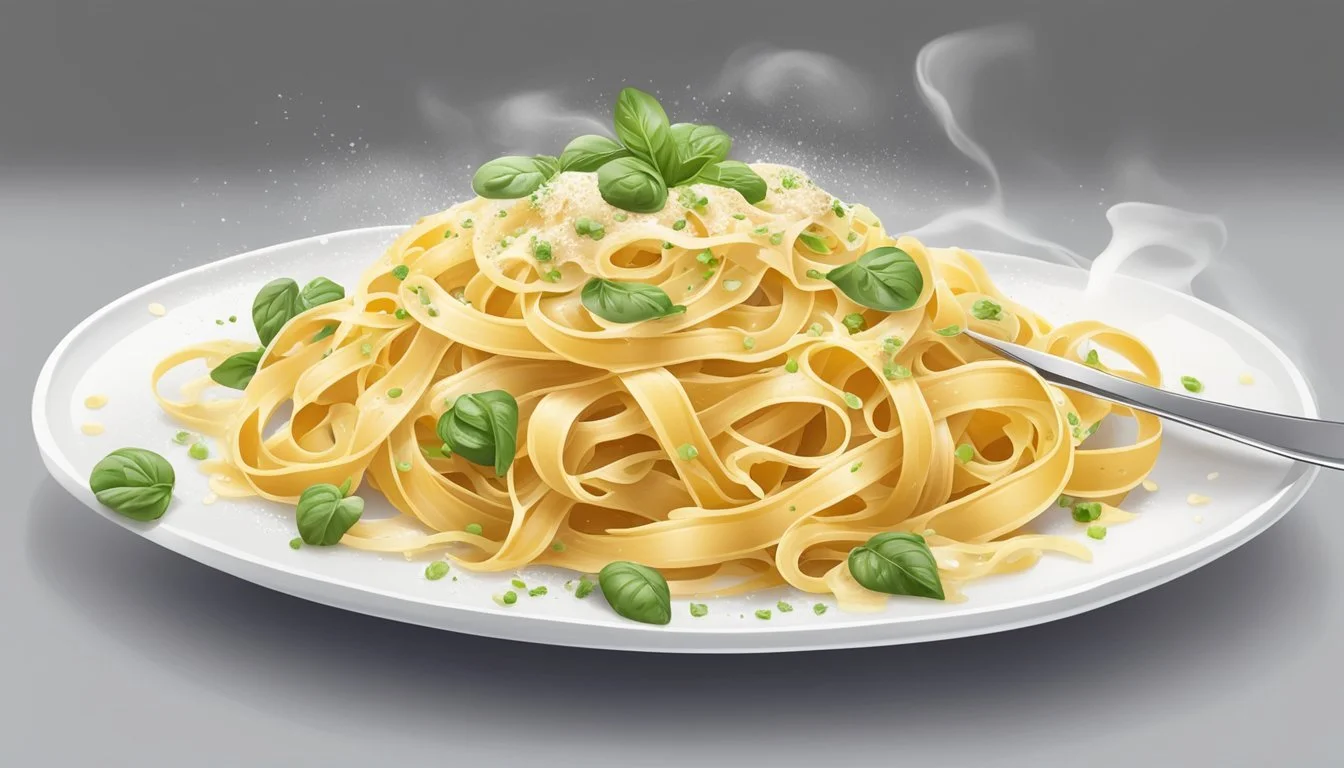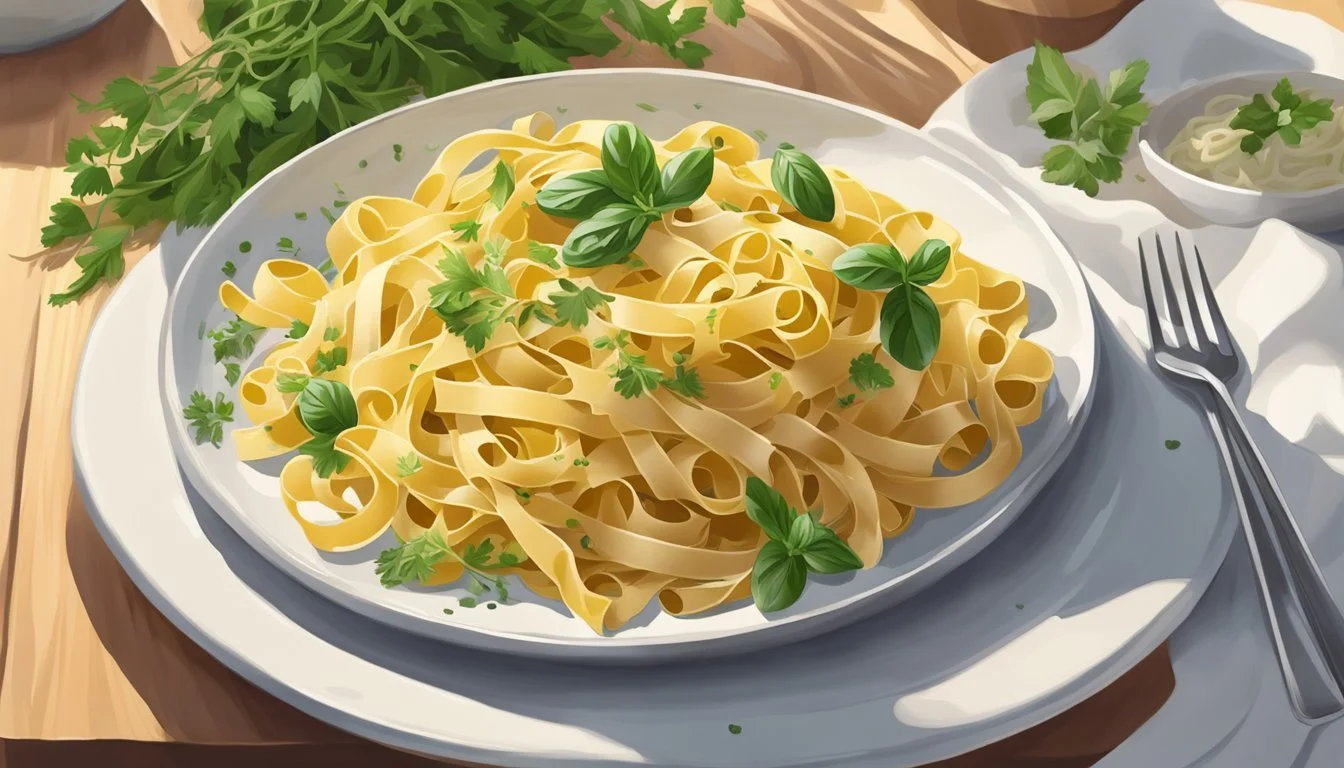How Long Does Freshly Prepared Tagliatelle Last
Shelf Life and Storage Tips
Fresh tagliatelle pasta , an Italian classic, brings the essence of traditional cooking to the dining table. Its delicate nature contrasts with that of dried pasta (What wine goes well with pasta?) varieties, which boast a robust shelf life due to their low moisture content. Fresh pasta, conversely, is more perishable because it contains a higher amount of water, making it a breeding ground for bacteria if not stored properly.
Refrigerated fresh tagliatelle pasta typically remains consumable for about 4 to 5 days. This timeframe holds for both home-prepared and store-bought varieties, albeit store-bought may have a slightly shorter lifespan due to the precooking process which aims at extending its shelf-life. It is crucial to adhere to storage recommendations to maintain quality and ensure safety, factors that are integral to the enjoyment of fresh pasta.
Understanding the perishability and proper storage of fresh tagliatelle is vital. This knowledge ensures that consumers can fully appreciate the taste and texture of fresh pasta without the risk of spoilage. Pasta enthusiasts should consume homemade tagliatelle within a couple of days from preparation, while being mindful that all forms of fresh pasta are best enjoyed promptly to capture the flavor and quality at its peak.
Understanding Fresh Pasta
When discussing fresh pasta, it's crucial to distinguish it from dried pasta, recognize the importance of quality ingredients, and understand the nuances of making pasta at home.
Fresh Pasta Vs. Dried Pasta
Fresh pasta typically includes simple ingredients, such as semolina flour and eggs, whereas dried pasta may not contain eggs and is often made to last longer on the shelf. Fresh pasta requires refrigeration and is best consumed within 1-2 days of being made, while dried pasta has a shelf life of up to two years under proper storage conditions. Fresh pasta cooks much faster than dried pasta, often in just a few minutes.
Importance of Ingredients
The quality of ingredients in fresh pasta cannot be overstated. Semolina flour is favored for its high gluten content, which imparts a desirable texture and elasticity to the pasta. Eggs add richness, color, and also contribute to the pasta's structure.
For those with dietary restrictions, gluten-free alternatives may include a combination of rice flour, corn flour, or other gluten-free flours. Olive oil is sometimes incorporated into a pasta recipe to enrich flavor and texture.
Homemade Pasta Considerations
Creating homemade pasta is both an art and a science. It often involves using a pasta machine or a food processor to ensure a smooth and workable dough. Those embarking on making homemade pasta should be prepared for a hands-on process, requiring attention to detail when mixing, kneading, rolling, and cutting the pasta into shapes like tagliatelle.
Fresh pasta's short lifespan is a key consideration for home cooks. The lifespan can be slightly extended by proper storage, which involves refrigerating the fresh pasta in an airtight container or freezing it for long-term use.
Storage Techniques
Proper storage of fresh tagliatelle pasta maximizes its shelf life while maintaining the freshness desired in fine pasta dishes. Moisture, temperature, and humidity are crucial factors to be managed.
Optimal Storage Conditions
To preserve the quality of fresh tagliatelle, one must consider the ambient factors that affect its longevity. The ideal temperature for storing fresh pasta is in a refrigerator at around 4°C (39°F) to slow down the growth of bacteria. Fresh pasta is best kept in an environment with low humidity to prevent it from becoming sticky or moldy.
Storing Fresh Tagliatelle
When storing fresh tagliatelle in the refrigerator, one should place it in an airtight container or a tightly sealed plastic bag to shield it from moisture and other contaminants. Fresh, uncooked tagliatelle typically has a shelf life of 1-2 days in the fridge, whereas its cooked counterpart can last for 3-5 days when stored correctly. Ensuring that the pasta is dry before refrigeration can further extend its freshness.
Freezing Fresh Pasta
For prolonged storage, freezing fresh tagliatelle is effective. To freeze fresh pasta, one should first lay it out to dry slightly to prevent clumping. Afterward, place the pasta in a single layer on a baking sheet lined with parchment paper and dusted with semolina flour. Freeze uncovered for about an hour before transferring the tagliatelle to airtight freezer bags. When stored in the freezer, fresh tagliatelle can last for up to two months, maintaining its quality and taste.
Shelf Life of Fresh Tagliatelle
Fresh Tagliatelle pasta offers a delicate texture and taste, but its shelf life is considerably shorter than its dried counterpart. Such fresh pasta must be stored properly to maintain quality and prevent spoilage. When discussing the storage of Tagliatelle, two common methods come to the forefront: refrigeration and freezing.
Refrigerated Fresh Pasta
Refrigeration extends the shelf life of fresh Tagliatelle to approximately 4-5 days. To maintain its freshness, the pasta should be stored promptly after purchase or preparation.
Keep the fresh pasta in an airtight container or a sealed plastic bag.
Ensure it's in the coldest part of the refrigerator to minimize the risk of temperature fluctuations.
Spoilage signs are noticeable in changes to the pasta's color, smell, and texture, and at any sign of these, it should be discarded.
Frozen Fresh Pasta
To further prolong the shelf life, fresh Tagliatelle can be frozen, where it can last for several months. Before freezing, one must prepare the pasta correctly:
Semi-freeze the fresh pasta by laying it flat on a tray until firm.
Lightly coat with oil to prevent sticking: approximately one tablespoon of olive or cooking oil per eight ounces of pasta.
Transfer the semi-frozen pasta to airtight bags or containers.
Clearly label each container with the contents and date to monitor how long pasta has been stored.
Thaw frozen Tagliatelle in the refrigerator before use. It's vital to use it immediately after thawing to ensure optimal quality and taste.
Preparation and Cooking
In the journey from kitchen to plate, fresh pasta like tagliatelle requires careful attention to cooking times and storage conditions, ensuring its delicate texture and nuanced flavor are preserved.
Cooking Fresh Pasta
Fresh tagliatelle boasts a swift cooking process, with a preferred outcome of al dente texture that is simply 'firm to the bite'. The steps for cooking fresh tagliatelle include:
Boil Water: Fill a large pot with water and place it on the stove over medium-high heat until it reaches a rolling boil.
Add Salt: Generously salt the boiling water to enhance the pasta's flavor.
Cooking Time: Carefully add fresh tagliatelle to the boiling water and stir gently to separate the strands. The ideal cooking time is usually between 3-4 minutes. It is essential to taste the pasta before draining to ensure the desired al dente consistency.
Drain: Instead of pouring the contents into a colander, it's recommended to remove the pasta using a slotted spoon or skimmer, transferring it directly into the awaiting sauce to prevent the strands from sticking and to absorb flavor.
Different Pasta Types
Different types of pasta require unique cooking times and approaches. Here's a brief comparison of commonly known types:
Tagliatelle: This flat, ribbon-like pasta is slightly thicker than other types, demanding a cooking time of 3-4 minutes to achieve al dente. It pairs well with robust and creamy sauces (What wine goes well with creamy sauces?).
Ravioli: As a filled pasta, ravioli should be handled carefully in boiling water and generally cooks in about 4 minutes. They float to the surface once they're ready.
Fettuccine: Similar to tagliatelle, fettuccine is typically cooked within 3-4 minutes and is best served with hearty meat sauces.
Spaghetti: This long, thin noodle usually needs about 5-6 minutes to cook to al dente. Spaghetti is versatile and pairs with a wide range of sauces.
Knowing the nuances in preparation and cooking times across different pasta types ensures that one can tailor their method to serve perfectly textured food, highlighting the pasta's role as a foundational element in a plethora of exquisite recipes.
Health and Safety
When handling freshly prepared tagliatelle, one must be vigilant about the risks of spoilage and be aware of the food safety concerns to prevent health issues. Ensuring proper storage and recognizing when the pasta has gone bad are critical for maintaining the safety and freshness of the food.
Recognizing Spoilage
Freshly prepared tagliatelle can show signs of spoilage which one should be attentive to:
Visual cues: Mold can appear as fuzzy spots of various colors. If one observes any mold or discoloration on the tagliatelle, it should not be consumed.
Odor: An off smell is a strong indicator that the pasta has begun to spoil and should be discarded.
Texture: A slimy or sticky feel is another sign that the tagliatelle is no longer fresh and should be tossed out.
Food Safety Concerns
Food safety is paramount when storing and consuming freshly prepared tagliatelle:
Temperature control: To minimize risk of bacterial growth, such as salmonella, the tagliatelle should be refrigerated at or below 40°F within two hours of cooking.
Storage duration:
Refrigerated: Consuming within 4-5 days when stored correctly.
Room temperature: Fresh tagliatelle should not be left out at room temperature for more than 2 hours.
Failure to adhere to these safety guidelines can result in food-borne illnesses. Always prioritize health and safety by carefully monitoring the freshness and storage conditions of tagliatelle pasta.
Tips and Best Practices
Proper storage and handling are paramount in ensuring that freshly prepared tagliatelle maintains its quality and safety. By adhering to expert advice and best practices, one can extend the shelf life of this beloved pasta.
Enhancing Pasta Freshness
Storage: Fresh tagliatelle should be stored in the refrigerator and typically lasts for 4-5 days past its "best by" date. To maximize freshness, store the pasta in airtight containers or sealable plastic bags.
Handling: If pasta is cooked, cool it down and then lightly toss with olive oil—about one tablespoon per eight ounces—to prevent sticking. For freezing, ensure pasta is semi-frozen before placing it in bags to prevent clumping.
Pasta Evangelists' Advice
Cooking: Fresh tagliatelle is best cooked to al dente, usually achievable within 3-5 minutes, depending on thickness. This not only enhances taste but also prevents overcooking when reheating.
Refrigeration: Pasta Evangelists recommend consuming fresh pasta within 48 hours of purchase or preparation for optimal taste and safety. If it must be kept longer, emerging best practices include freezing it, which can preserve the pasta for up to three months.







